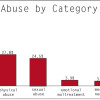Centers for Disease Control and the epidemiology of violence
Abstract
Violence is a major cause of morbidity and mortality in the United States. The Center for Health Promotion and Education, the Centers for Disease Control (CDC) has begun to apply epidemiologic techniques to study the problems of child abuse, child homicide, homicide, and suicide.… Read more

